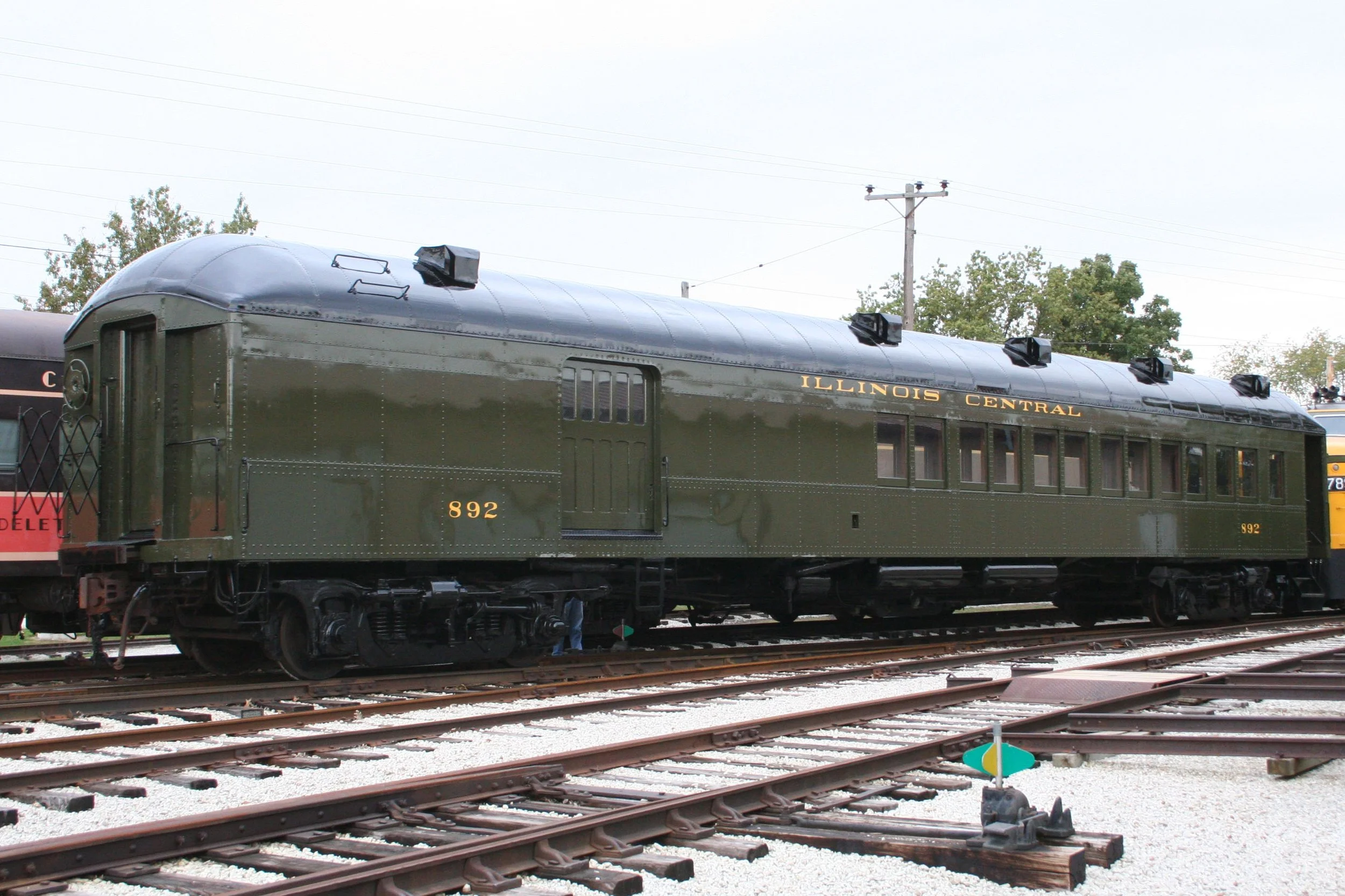Illinois Central #892
Builder: Pullman
Built: 1918
Type: Combine
Status: Operational
Car No. 892 was built at the Pullman Company’s shops on the south side of Chicago in 1918 for use on the Illinois Central Railroad. It is a “combine” type passenger car, meaning half of the car is used for storing passengers’ luggage, while the other half has typical coach seating.
Combines were usually used on local or regional passenger train operations where the lack of baggage brought aboard by passengers eliminated the need for a full baggage car. Combines could be found on railroads all over North America throughout the first half of the 20th Century.
No. 892 was retired by the Illinois Central in 1947 and subsequently sold to the American Steel Foundries (ASF) Company. ASF made heavy modifications to the car, converting it from three-axle “trucks” (wheel/axle assemblies) to a new at the time high speed 2 axle truck. This required much change to the body bolster and frame, which created a “hump” in the floor over each truck. ASF also added windows of thick, laminated glass in the floor over each truck so the action of the truck, wheels and braking systems could be observed by research engineers while the car was in motion. The floor of the car was also raised to create ballast pockets so the car’s weight could be varied to allow for more testing variables. When the car was initially restored for passenger service here in Monticello, the glass floor in the coach section was removed, along with the raised floor and weight pockets. Under the raised floor we found marks remaining of where the seats were originally located, allow us to easily put the seats back where they were supposed to be. The baggage section was left, as much as practicable, as it was when in use by ASF. This included the unique air brake rack and valves, (that originally allowed the brakes on this car to be applied and released from within the car itself while undergoing tests) the unique glass floor, (allowing passengers a rare opportunity to watch the track passing directly beneath them) a water tank used to wash sand from the rails, and sander tanks that flank either side of the end door in the baggage area, used to put sand ON the rail to increase braking effort by minimizing wheel slide.
The Monticello Railway Museum is very fortunate to have No. 892 in its collection. Other cars of this type were scrapped decades ago, and today, No. 892 is the only surviving example. The car is almost always used alongside Rock Island No. 2541 on our regular weekend excursion trains.

